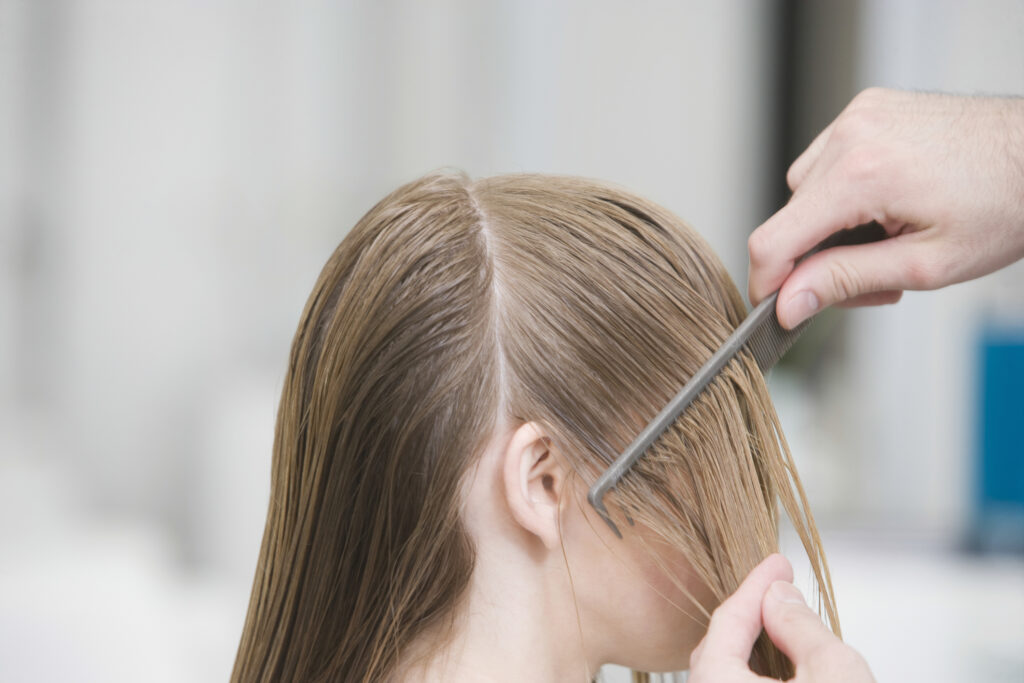7 Best Haircuts for Thin Straight Hair

Finding the perfect haircut for fine, straight hair can be challenging. While thin hair can seem limiting, the right cut can transform your locks to look more stylish and add volume. We’ve compiled the seven best haircuts for fine straight hair that will give you the appearance of fuller, more dynamic tresses. Let’s get right into it!
The Classic Blunt Cut Bob
The blunt bob remains one of the most effective cuts for straight hair, mainly when dealing with fine texture. This style creates an illusion of thick hair through its clean, sharp lines. The key to this cut’s success lies in its precision. When cut at one length, typically between chin and shoulder level, it maximizes the appearance of hair density.
What makes this style particularly suitable for thin straight hair?
- Creates a strong, defined line that suggests thickness
- Eliminates wispy ends that can make hair appear thinner
- Requires minimal styling while maintaining a polished look
- Works well for both professional and casual settings
Long Layered Cut with Face-Framing Pieces
These long hairstyles for fine, straight hair don’t have to be flat and lifeless. Strategic layering can help you create movement and the appearance of volume while maintaining length. The key is to keep layers long and minimal, focusing on face-framing pieces that start around the chin and blend seamlessly into the rest of the hair. Avoid choppy layers!
This style works particularly well because it:
- Adds dimension without removing too much bulk
- Creates movement that makes hair appear fuller
- Allows for versatile styling options
- Maintains length while adding body
- Add texture with face framing layers
The Textured Lob
The long bob, or “lob,” is among the most versatile hairstyles for fine, straight hair. This shoulder-grazing cut can be customized with subtle layers and texturizing techniques to create natural volume and movement. The length is ideal for those who want to maintain some length while benefiting from the volume-boosting effects of a shorter cut. Remember to use texture spray in the process!
Pixie Cut with Textured Crown
For those bold enough to go short, a pixie cut can be transformative for thin straight hair. This style actually makes the most of fine hair texture by creating piece-y, textured sections that give the appearance of fullness, especially at the crown. Different face shapes can accommodate variations of this cut to ensure it flatters your features.
Mid-Length Cut with Internal Layers
Internal layers are a game-changer for layered styles for thin hair. Unlike traditional layers that can make ends appear wispy, internal layers add hidden volume without compromising the outer shape of the hair. This technique creates body and movement while maintaining a strong perimeter line.
The Modern Shag
The modern shag is among summer’s trendy haircuts, which has been reimagined to work beautifully for fine straight hair. Unlike its heavily layered predecessor from the 70s, today’s version features softer layers and longer curtain bangs or side swept bangs that can be styled to create volume at the crown while maintaining enough weight throughout the cut.
Graduated A-Line Bob
The graduated A-line bob is a sophisticated choice that creates natural volume through its architectural structure. This cut for straight hair features a slight angle from back to front, with soft stacking at the nape of the neck. The graduation technique builds weight in just the right places, making it an excellent choice for those with fine hair seeking a polished, professional look.
Styling Tips for Fine Straight Hair

Proper styling is a must for maintaining volume and movement in fine, straight hair, regardless of which haircut you choose. Here are some essential tips:
- Use lightweight volumizing products that won’t weigh hair down
- Apply dry shampoo at the roots, even on clean hair, for added lift
- Avoid heavy conditioning products near the scalp
- Use a root lift spray before blow-drying
- Invest in quality thermal protection products to prevent damage
Maintenance Considerations
Regular maintenance is a must to keep haircuts for thin hair looking their best. Schedule trims every 6-8 weeks to prevent split ends and maintain the cut’s shape. This is particularly important for shorter styles and those with precise lines, as they can lose their impact if allowed to grow out too much.
Conclusion
Finding the right haircut for fine, straight hair doesn’t have to be a challenge. Whether you prefer short and sassy or long and layered, there’s a style that can work for you. The key is choosing a cut that maximizes your hair’s natural texture while creating the illusion of fuller, more voluminous locks.
When styled and maintained correctly, these haircuts can transform fine, straight hair from flat and lifeless to full and dynamic. The right cut, paired with appropriate styling techniques and products,s can significantly affect how your hair looks and feels daily.
The best haircut for your fine, straight hair type will depend on several factors, including your face shape, lifestyle, and styling preferences. Consult with a professional stylist who can assess your hair’s texture and density to recommend the best option for you from these choices.






